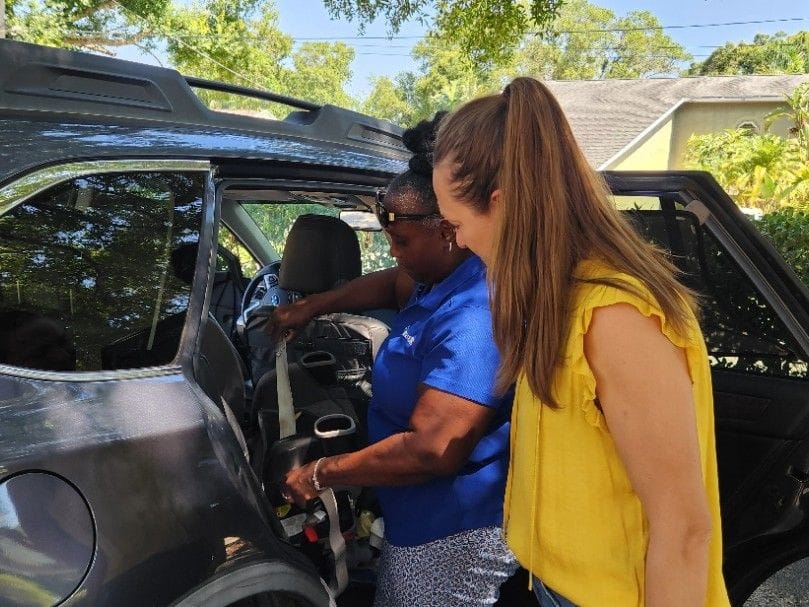Safety Check! Are You Using Your Child’s Car Seat Correctly?
The messaging isn’t new – using the correct car seat and installing it properly can not only significantly reduce the risk of injury but also save your child’s life in the event of a car crash. And yet, a new AAA analysis found that over 93% of Florida parents transition their kids to an adult seat belt too soon, and more than 1 in 4 switch to a booster seat before it’s safe. And then there’s the car seat itself.
Many parents believe they’ve installed their child’s car seat correctly, but that’s often not the case, according to child safety experts. In 2023, 74% of car seats inspected were used improperly or incorrectly installed*. The most common mistakes observed are:

In Case You’re Interested:
>> Super Fun Family Restaurants
>> Cheap Family Fun
>> Orlando Hotels with Waterparks
- Installing the car seat too loosely
- Not using the tether when installing a forward-facing seat.
- Leaving the harness too loose when securing the child
Don’t Rush the Transition: When to Move to the Next Seat
The transition from rear-facing to forward-facing, or out of a booster seat is another potentially confusing subject parents need to know about since it can be dangerous if done too early.
“Parents are often eager to turn their young children forward-facing in their car seats too soon,” says Mark Jenkins, spokesperson for AAA – The Auto Club Group. “However, due to their underdeveloped bodies, young children below the age of two who ride forward-facing are at a greater risk of head, neck, and spinal cord injuries if involved in a collision.”
Although it may be tempting to change things up with your car seat, make sure you double-check the expert-recommended stages:
- Rear-facing: Keep children rear-facing as long as possible — until they exceed the height or weight limit for the seat (typically age 2 or older)
- Forward-facing with a harness: Use until your child outgrows the seat’s limits — often up to 60 pounds or more.
- Booster seat: Use until a seat belt fits correctly — usually between ages 8–12 or when the child reaches 4’9” tall.
- Adult seat belt: Only when your child passes the “Seat Belt Fit Test” — the lap belt rests on the upper thighs, the shoulder belt crosses the chest (not the neck), and the knees bend comfortably over the seat’s edge.
Regardless of which seat your child is in, the back seat is the safest place until at least age 13. Make sure to register your car seat to receive recall notices and essential safety updates, and if in doubt, get your car seat inspected. VisitSeatCheck.orgor one of our local Orlando providers like Orlando Health Arnold Palmer Hospital, Safe Kids Orange County, or AdventHealth for Children to schedule an inspection.
By the Numbers:
Child Restraints Reduce Fatalities by 71% for infants <1 year, and 54% for children ages 1-4 years in passenger vehicles, according to the U.S. Department of Transportation.
Florida Law:
Children ages 5 and under must be in a crash-tested, federally approved child restraint system. AAA and the National Safety Council recommend utilizing the added protection of a booster seat or properly fitted harness for children up to the age of 12 or until they reach 4’9” tall, depending on fit.
*According to the National Digital Car Seat Check Form (NDCF)
READ MORE ON CAR SEATS:
- Uber Car Seat: A Family-Friendly Solution for Orlando Visitors & Residents
- Target’s Car Seat Trade-In Program
Originally published in the Sep/Oct 2025 Issue of Orlando Parenting Magazine.

